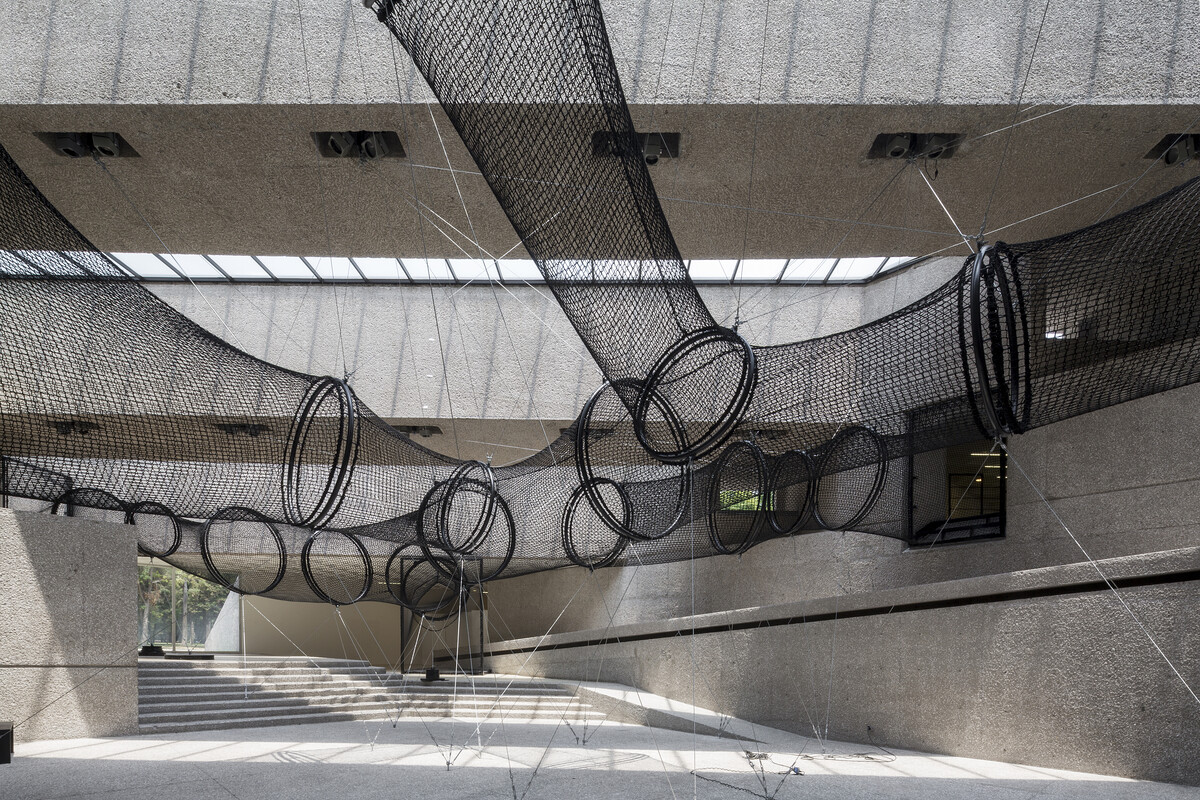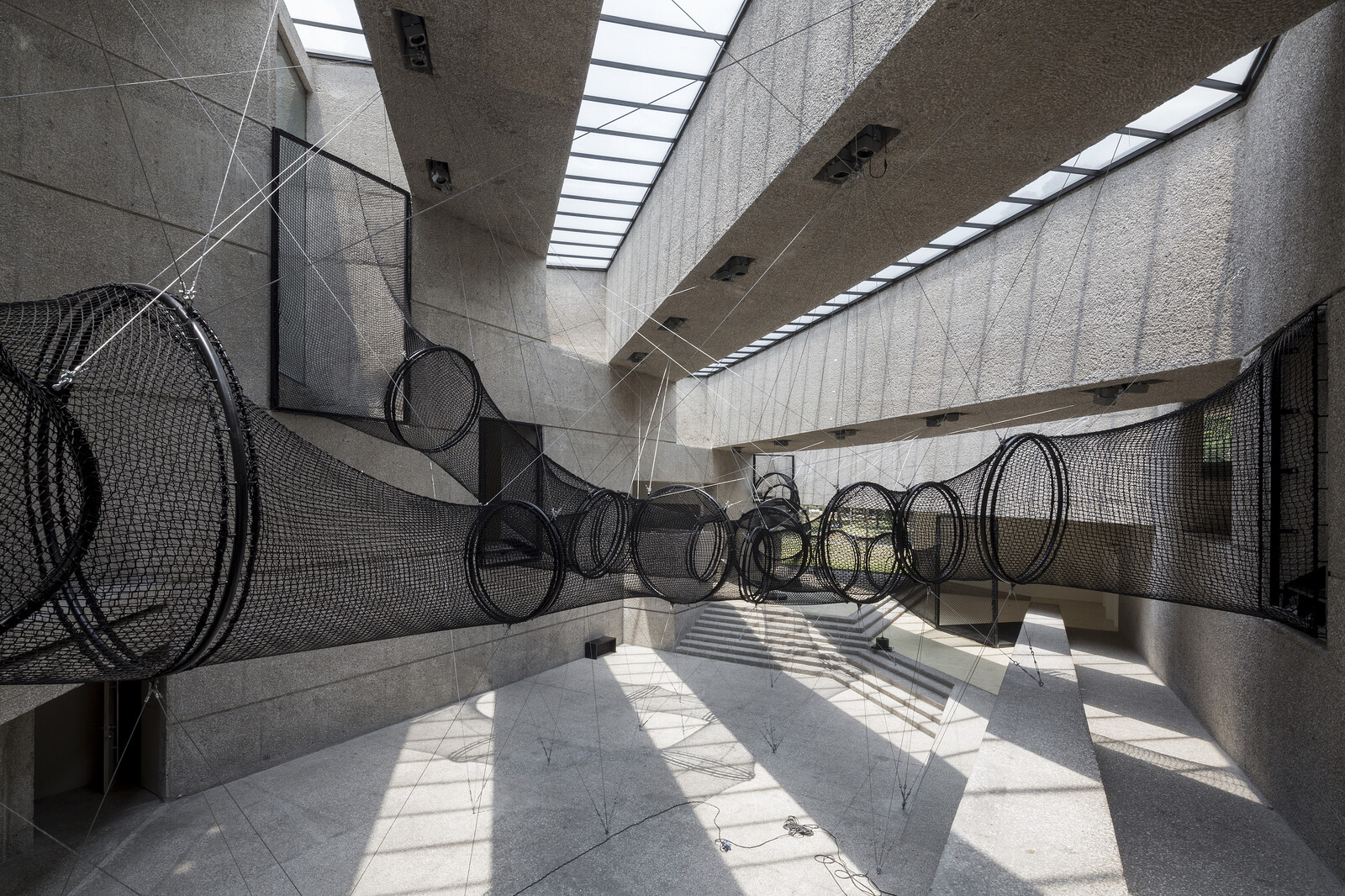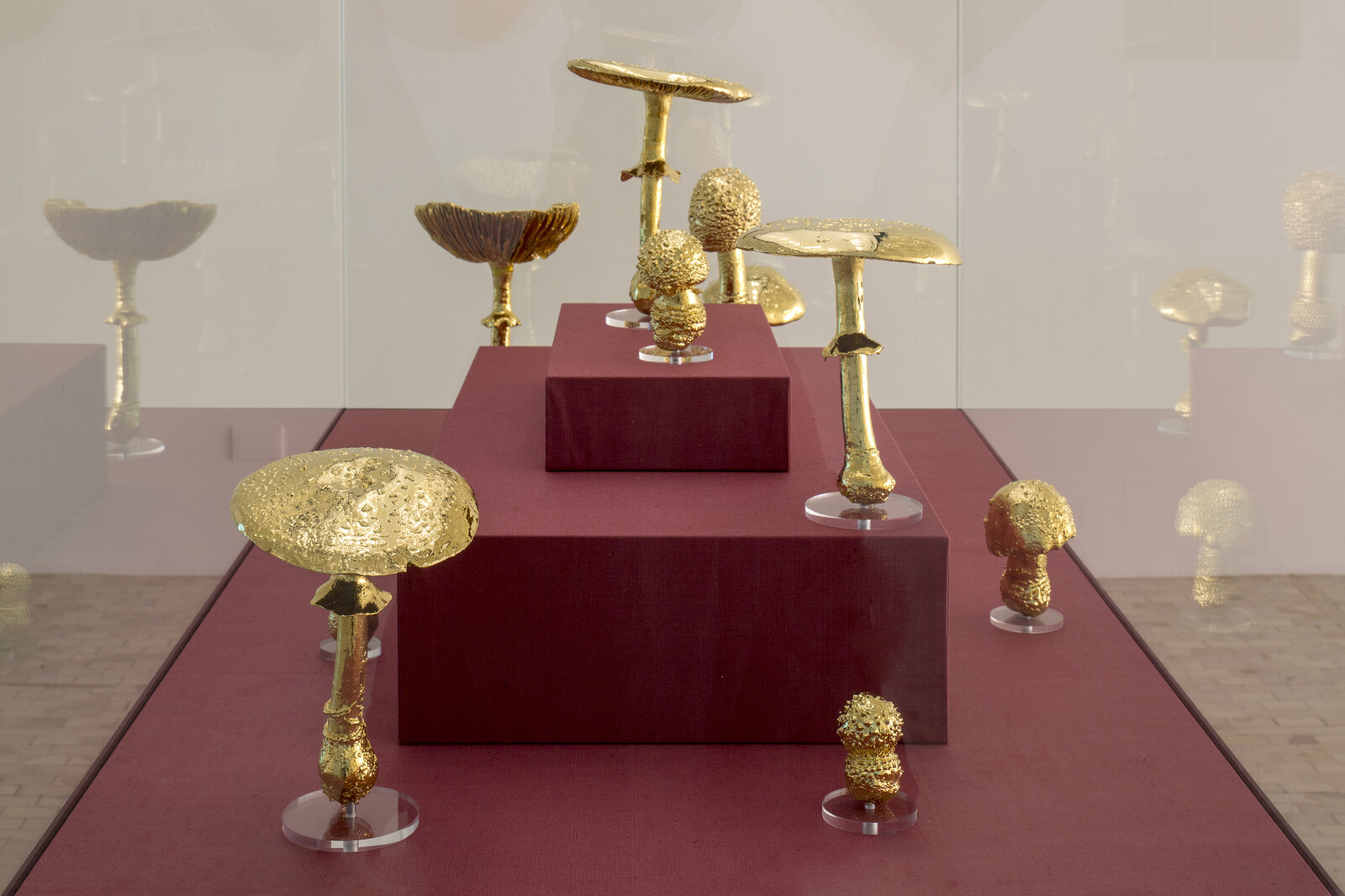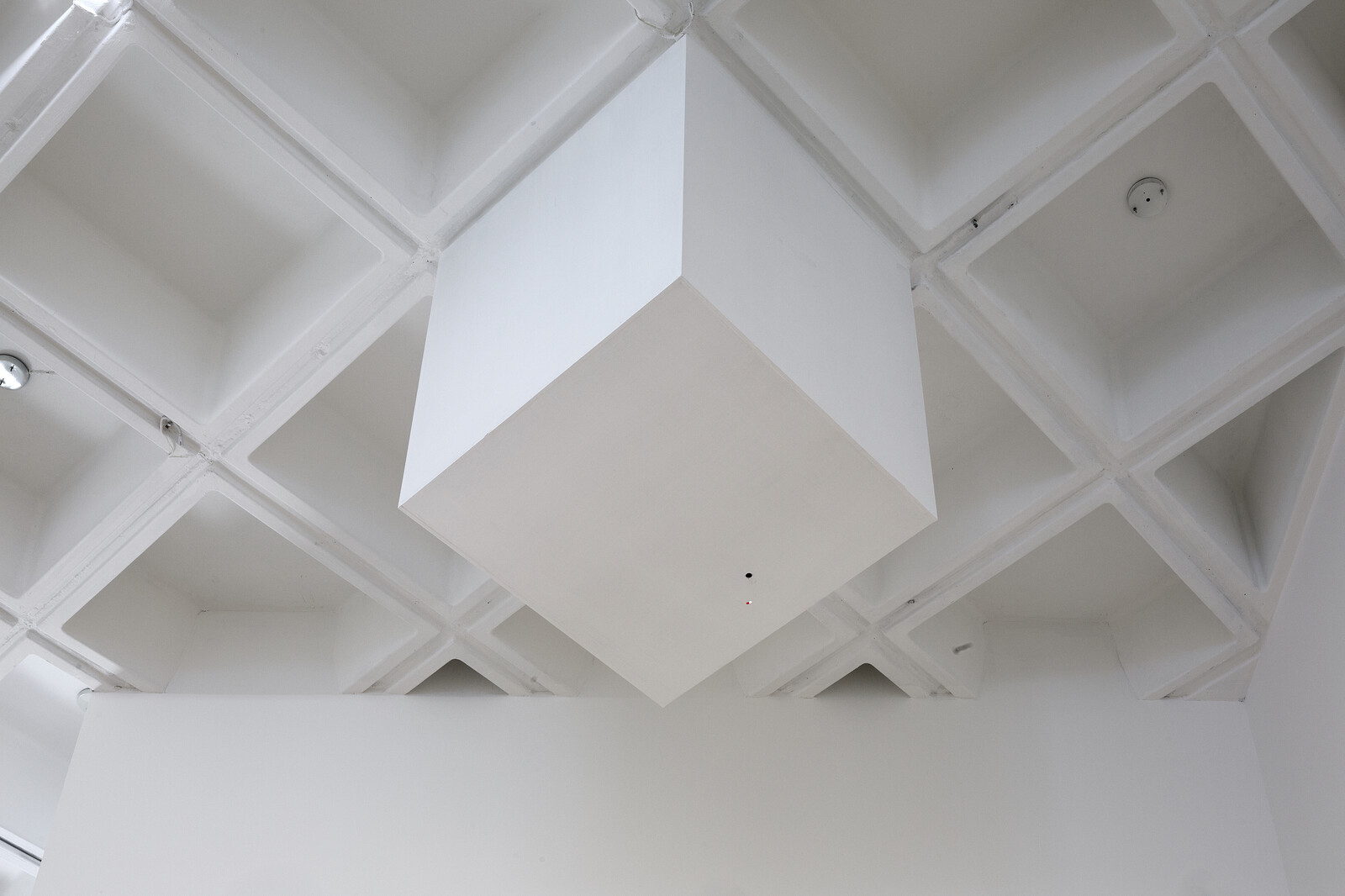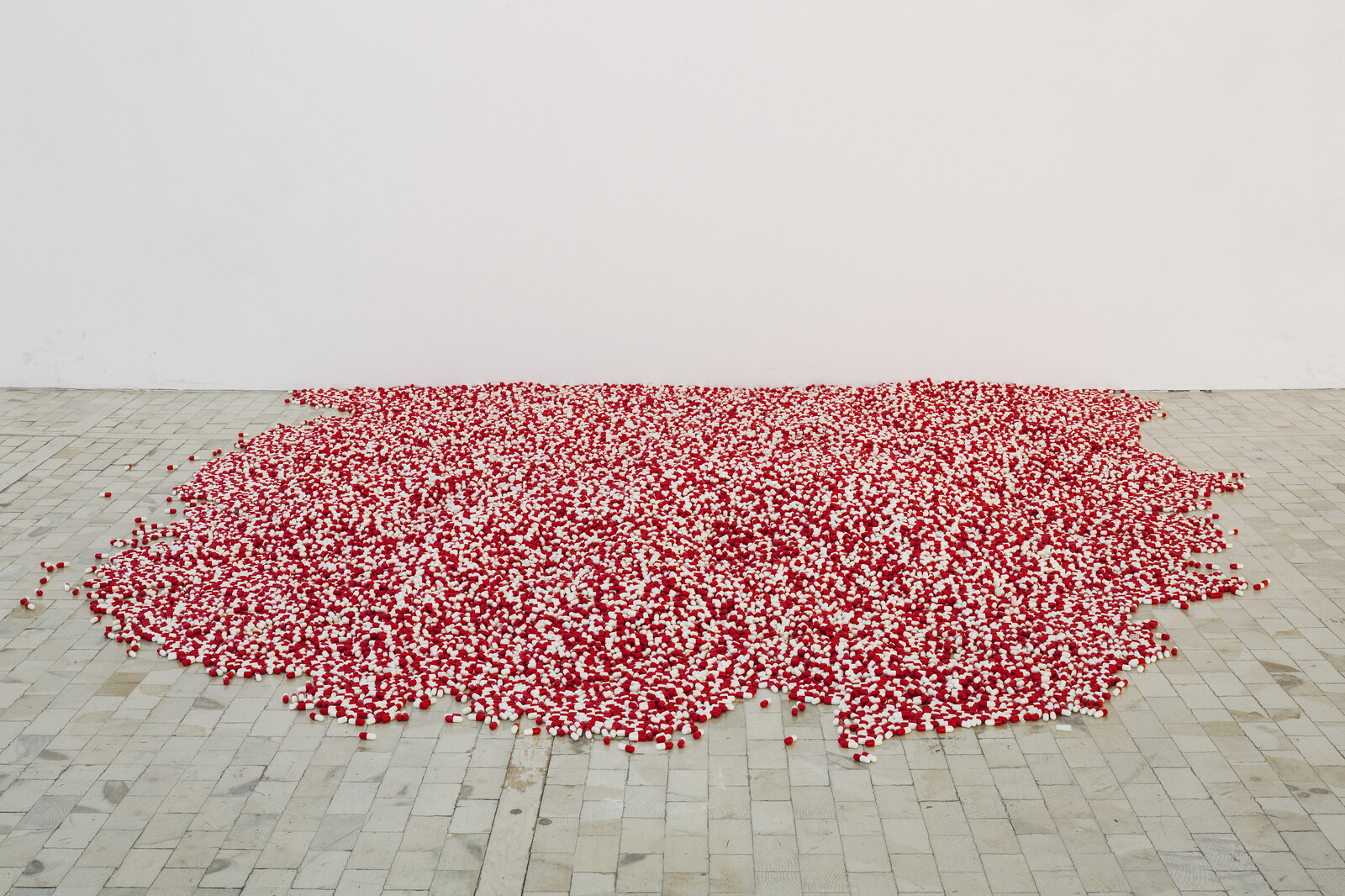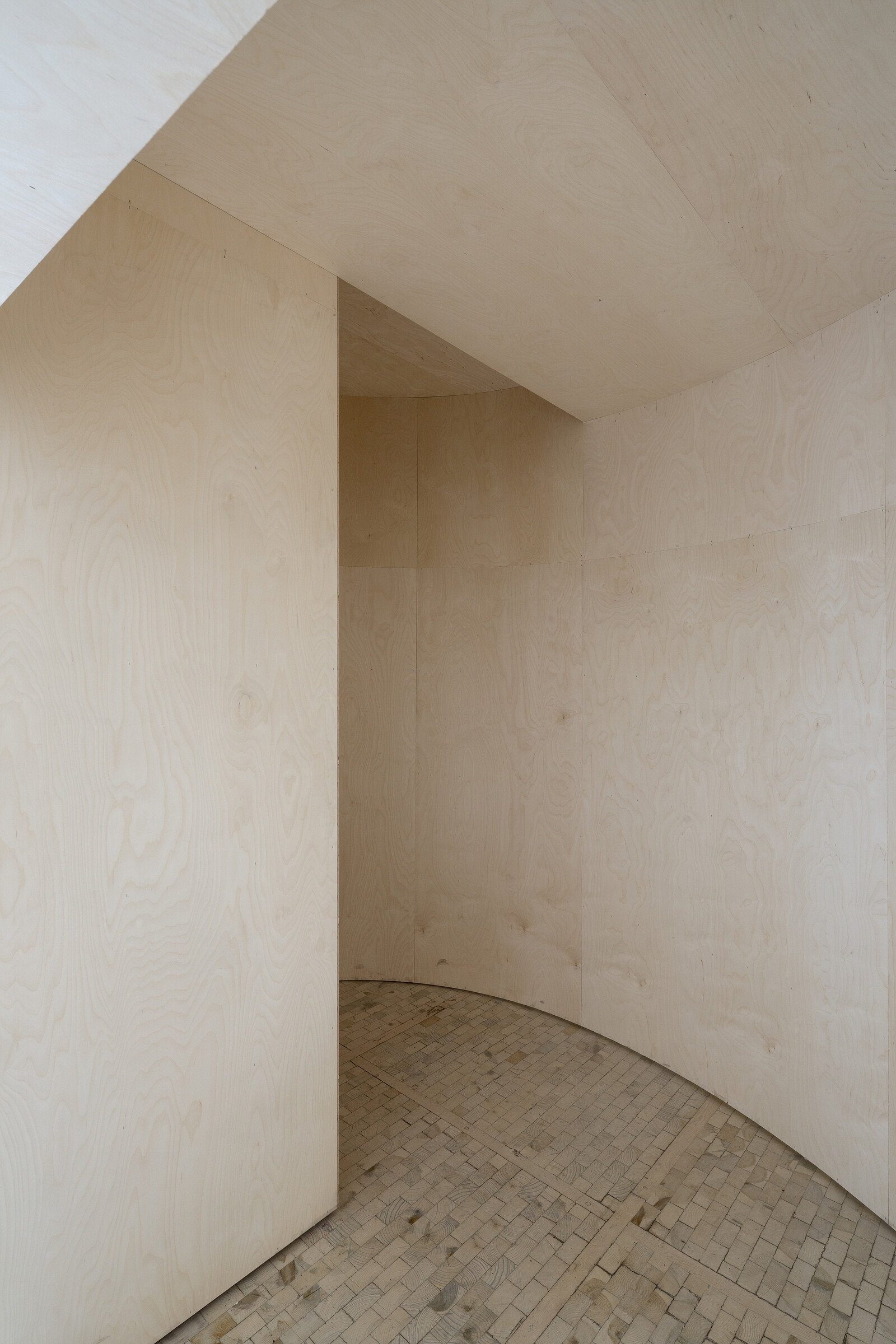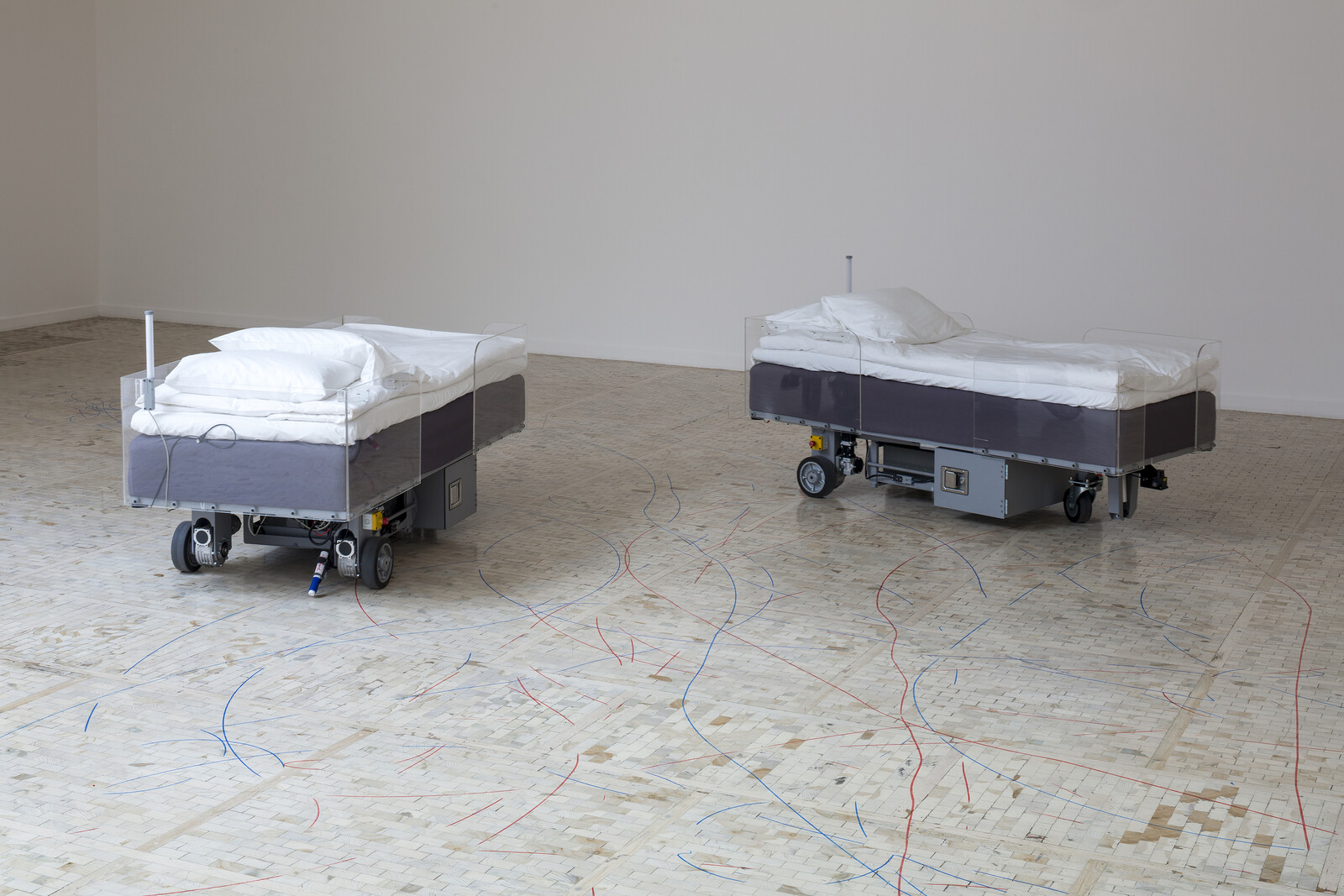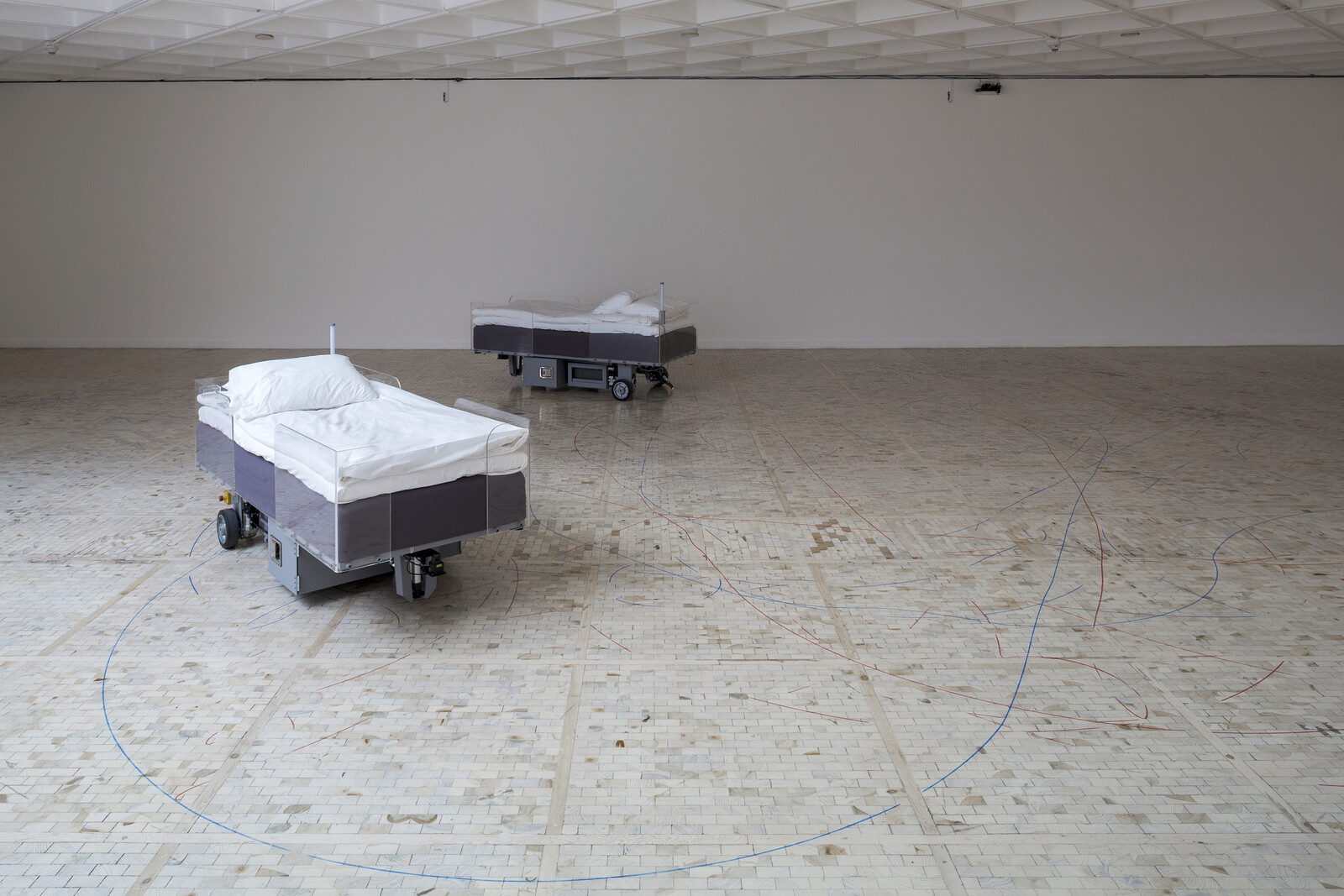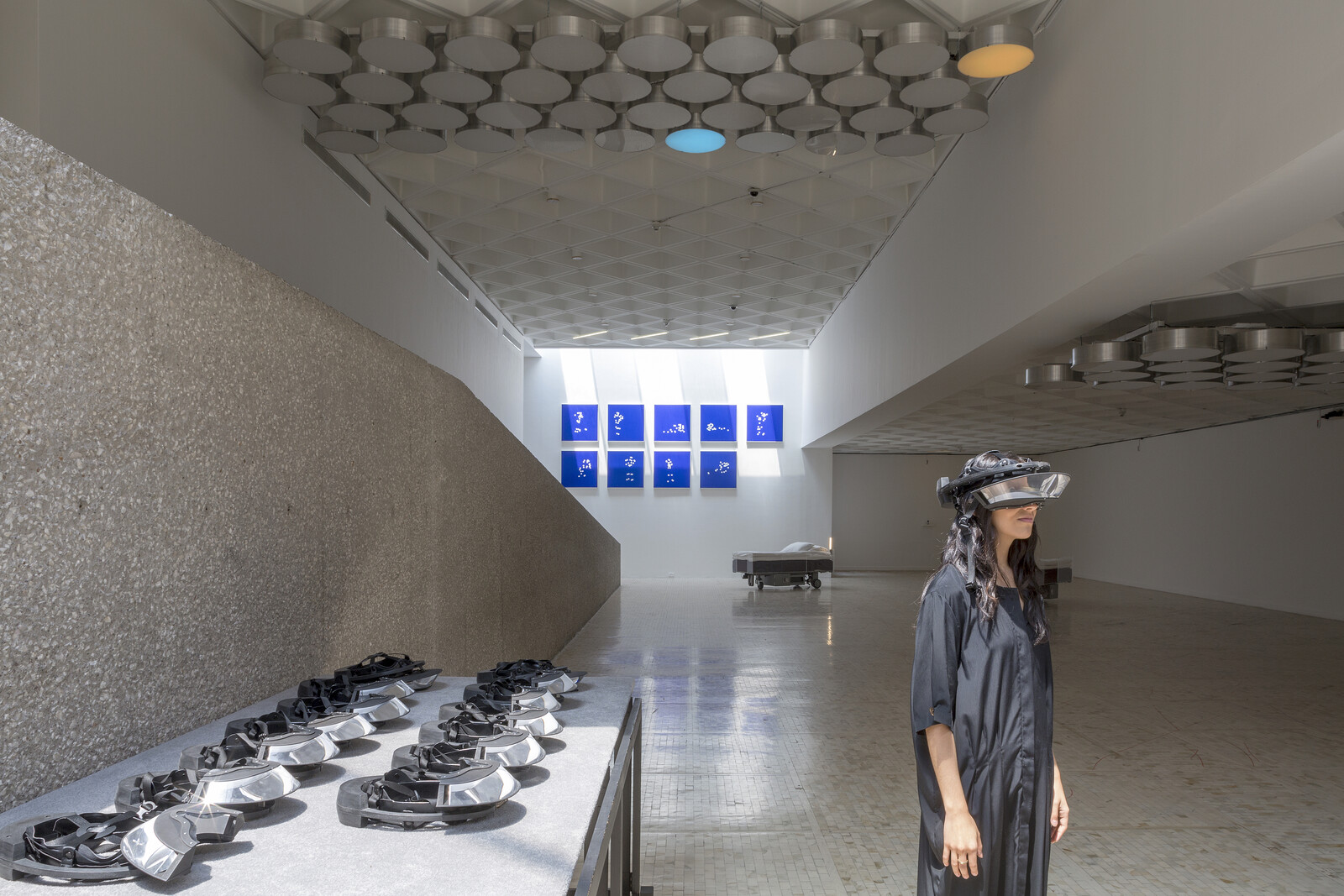I was required to make a choice upon entering Rufino Tamayo’s famed museum in Chapultepec park in Mexico City. Wait up to an hour (or more) in line to crawl through Decision Tubes (2019), an interconnected web of mesh tunnels suspended in the sundrenched atrium that leads to different areas of the museum, or skip the wait and walk through Seven Sliding Doors (2014), a wall-to-wall mirrored hallway with automatic sliding doors that lead viewers into the main gallery space. These are the introductory artworks that open “Sunday,” Carsten Höller’s first survey in Latin America. Though the works in the exhibition all seem to promise a certain sense of amusement and playfulness, they are at best bewildering and surprisingly not fun.
This is not to say that Decision Tubes (myself and a group of friends finally decided to wait in line, begrudgingly) doesn’t spark a certain childlike glee, or at the very least a novelty experience, when awkwardly squirming through it. The work reminded me of a McDonald’s PlayPlace at every turn—a play area that most American children who grew up in the 1990s can remember with great fondness. But unlike its predecessor Decision Corridors (2015), a maze-like structure of galvanized steel, Decision Tubes pushes viewers in a specific direction. At different outlets museum guards urged me back into the mesh tubes to eventually find myself on the roof of the museum, leaving the experience of the piece woefully contrived.
What followed, after stepping onto the roof, was the most disorienting and, perhaps, exciting moment of the show. As I reentered the museum, I was confronted with Swinging Spiral (2010/2019), a cylindrical wooden structure that gives the optical illusion of walking through a spiral room that gets increasingly smaller and smaller. The illusion is effective. I was taken aback by a moment of disbelief when I found out it was a ruse by the end of it, leading me back where I started. Leaving the space—which involved inching through a narrow space between a wall and Swinging Spiral—I finally entered the main gallery, where all the other artworks in the show are located and forced into a fixed theme: altered states of consciousness and the simulation of recreational drug use in a public space (i.e. a museum).
This is exemplary of works like Light Wall (2000/2017), a wall of strobing light bulbs that aims to induce hallucinations and/or nausea; Pill Clock (Red and White Pills) (2015), red-and-white capsule pills that fall from the ceiling into a pile on the ground à la Felix Gonzalez-Torres, and which Höller has cryptically suggested are laced with some type of hallucinogenic (viewers are invited to ingest one); 7,8 Hz (Vitrine With Golden Fly Agaric Mushrooms) (2019), a collection of small gold-plated psychedelic mushroom sculptures; and Upside-Down Goggles (1994–ongoing), eyepieces that literally turn the world upside down. Even Two Roaming Beds (Grey) (2015), a set of robotic beds that constantly move across a room, streaking the floor with red and blue ink, incorporates some use of mind-altering substance. Visitors can book an overnight stay in the two beds, complemented with a “dream-enhancing” toothpaste to further their experience. The cost of doing so is 5,000 MXN (roughly 260 dollars)—a far cry from Höller’s Revolving Hotel Room (2008), which invited visitors to spend the night at New York’s Guggenheim Museum for up to 799 dollars per person as part of the 2008 group show “theanyspacewhatever.” And perhaps a crucial difference lies in the contrast in scale, both in size and extravagance. Until recently, Höller’s work has been of epic proportions (think of Test Site, the massive corkscrew slides he installed in the Turbine Hall of London’s Tate Modern in 2006, or Soma [2010], an installation that at the Hamburger Bahnhof in Berlin housed 12 live reindeer among other animals). Stripped of opulence, however, the work’s hollowness is laid bare.
The union of relational aesthetics with luxury and all things spectacular and indulgent from the time of shows like “theanyspacewhatever” elevated the movement into a realm of mass appeal and critical heft. However, Mexico City’s current reception of Höller’s work falls flat. “Sunday” tries to fit the work of an artist widely known for his large-scale installations into a museum of modest size, and into a concept sheepishly tied to idea of being high. Rather than placing value on more spectacular or extreme artworks, it calls attention to the limits such works face outside a context of affluence and excess.
“Sunday” wants to be disorienting and infuriating at times, both visually and experientially. At moments, it achieves this goal (the entire show is void of any wall texts or information about the works). But more often than not, individual pieces become disengaging, clumsy, and lackluster. “Sunday” is neither a good nor bad trip, but an experience whose effects I was not even sure were working.
